-
Title (Dublin Core)
-
You can't fly without airfields
-
Article Title and/or Image Caption (Dublin Core)
-
You can't fly without airfields
-
extracted text (Extract Text)
-
THREE times in 150 years of United States
history, transportation has been revo-
lutionized. First came the development of
canals and other inland waterways; then,
the construction of our great railway net-
work; finally, the building of an incompar-
able highway system. Each of these in
turn brought profound changes in the Amer-
ican way of living.
Now we are at the beginning of a new
era in transportation. We are ready to
broaden and deepen the foundations for
what may well become the world’s finest
GOOD ROADS made the Auto Age come teu. Onl good Land:
ing fields—and plenty of them, everywhere—will make the.
Air Age come true.
Go back a littlo—to 1920, just after the last war. We had 339,000
mills of surfaced streets, roads, and highways. On these we drove
9,000,000 motor vehicles. By 1941 we had spent over forty billion
dollars for road building and had 1,697,000 miles of surfaced
streets, roads, and highways. They carried 34,000,000 motor ve-
hicles. And total travel was up 534 percent.
Landing fields are even more important to lying than good roads
are to motoring. You can't ly anywhere unless you can land.
The extent to which you and your town are going to share in the
benefits of the Air Age depends largely upon the personal interest
that you and your fellow citizens take in providing adequate land-
ing facilities—landing strips or Mightstops, airparks, air harbors.
Almost everyone is going to fly—in private planes, in air taxis
and air buses in transports. A town with good landing facilities
Sell grow with the Air Ago ... attract residents who are progres-
sive, successful, Forward-looking ... gain tho business advantages
and added employment that go with the development of a gigantic
new industry ... expand its community activities, will be tied
into the whole world-wide postwar system of air transport.
‘What finer tribute could any community make to the memory
of the men and women who are sacrificing their lives in World
War II than to build a victory landing field and dedicate it to
them? It would be a living memorial, better than any monument.
To combat postwar unemployment, many states are already
setting aside vast surplus funds for postwar improvements, part
of which should be earmarked for landing fields. And the Federal
Government, i it follows recommendations in the $1.250,000,000
“National Airport Plan” of the Civil Acronautics Administration,
mow before Congress, will share the costs with states on a 50-50
basis aa in the Public Roads program.
Now is the time, therefore, to use your influence in your own
community to plan a landing field and, if posible, acquire the
land. Only in this way can you—and all your fellow citizens—
share fully in the coming Air Age.
We should be glad to have your comments, suggestions, and
questions on this subject, Address the Aviation Editor, POPULAR
SCIENCE MONTHLY, 353 Fourth Avenue, New York 10, N. Y.
"THE EDITORS
facilities for travel in another medium—
the air.
Both for the big commercial airliners,
linking cities and continents, and for priv-
ately owned airplanes, giving personal wings
to millions, airports, “airparks,” and other
types of landing areas will be built in each
of the 48 states.
The bill: $1,250,000,000.
The goal five or ten years from now:
6,000 landing areas, or one within reach of
every American community with a popula-
tion of 1,000 persons or more.
There is a close parallel between railroad
and highway construction and the building
of places where airplanes can take off and
land. The major airport, with its multiple
runways and instrument landing equipment,
is to the transport plane what a track and |
a block-signal system is to the railroad
train. The airpark and subsidiary landing |
facilities are to the private plane what the
well-groomed highway is to the automobile.
The inland waterway was the backbone of
the United States domestic transportation
system in the first third of the nineteenth
century. The golden age of railroad con-
struction was the last half of that century. |
The extraordinary expansion of America's |
highway network occurred after the First |
World War.
Today the aviation counterpart of rail-
road and highway construction is a tele- |
scoped project. Landing areas to give both
the airliner and the personally owned plane
maximum utility will be built simultane-
ously.
And, interestingly enough, just as the
construction of railroads and highways had
a pronounced effect on the ability of the na-
tion to defend itself against attack, so will
landing facilities for airplanes contribute
to national defense.
When the war is over we are going to
need a lot of places where airplanes, of both
the transport and personally-owned types,
can take off and land.
Official Washington anticipates a twenty-
fold increase in the number of licensed air-
planes by 1950. On the basis of less than
25,000 nonmilitary aircraft of record before
Pearl Harbor, that would mean a half mil-
lion private planes and commercial trans-
ports. Other estimates run well beyond the
million mark for the end of the first decade
after the war.
Today there are good landing facilities for
only a fraction of either number.
We have, in fact, less than 3,000 fields,
exclusive of those built for military opera-
tions. Of those, 740 are suitable for air-
liners.
Only 291 communities in the United States
are served now by the scheduled air-trans-
port system. Almost 6,500 with popula-
tions of 1,000 or more have no service.
Government experts estimate that within
a decade after the war 20 million passengers
will ride the air lines annually as against
a fifth of that number in 1941.
The number of intercontinental commer-
cial airliner flights will be increased sharp-
ly. Planes will leave not only from the
seaboards but also from cities in the inter-
ior of the country. It is a shorter distance
from Chicago to Moscow than it is from New
York to Moscow, for instance.
In most parts of the United States the
private pilot, riding cross-country, keeps a
worried ear attuned to the throb of his en-
gine and a bilious eye on the weather, be-
cause the spots where he can make emer-
gency landings are few and far between.
On the average, he has a place to sit down
only once in every 1,204 square miles.
Even that figure is misleading, because
landing fields are bunched around the more
populous areas, leaving the great open
spaces arid of facilities. Moreover, fully
half the existing fields are indifferently
maintained. In bad weather they are mud
holes. They are badly marked. A pilot
needs a telescope to spot them from the air.
We are going to have a lot more places
where airplanes can take off and land. More
than 60 percent of the money to be poured
into standard airports and lesser landing
facilities is earmarked tentatively for im-
proving ports that can be used by airliners.
Here is a hypothetical case history of what
expanded air-line service would mean: Two
cities of 100,000 population lie 600 miles
apart. Between them, evenly spaced, are
five communities of 25,000 each. If a trans-
port plane makes a stop at one of those five
communities on its flights between the two
Dig cities, traffic between the terminals in-
creases by 70 percent. If two stops are
made at intervals of 200 miles, the traffic
increase is 160 percent. If stops are made
at all the intermediate communities, the
traffic between the two terminals increases
sixfold.
The rest of the money earmarked for
landing-field construction and improvement.
will go to the private flyer. Counting all
the projects in the long-term plan, he will
have a minimum of 5,000 ports. Possibly,
with the inclusion of intermediate landing
“strips,” he will have as many as 6,000 to
10,000 stopping points. If he had 8,000, he
would enjoy a landing area in every 372
square miles.
The nation’s smaller communities will
benefit most from the airport program. Of
the new airports planned, only 150 will be
built in cities of more than 50,000 popula-
tion; only 59 in cities of between 25,000 and
50,000; but 515 in cities of 5,000 to 25,000,
and 2,326 in towns of less than 5,000.
What neither industry nor Government
knows is just what America will have when
the building project is complete. Airplane
design, as to both size and performance,
which largely dictate airport design, is in a
state of flux. The commercial air lines are
only guessing about what kind of equip-
ment they will need a decade, two decades,
from now. Manufacturers are only guess-
ing about how many people will buy planes
for their personal use.
Will the transoceanic airliners
be behemoths of 200 tons gross
weight, as compared with today's
40-ton standard versions? Will the
domestically used transports carry
30 passengers or 100, and on hops
of what length? How many coast-
to-coast nonstop or one-stop sched-
ules will be needed as against
“local” schedules stopping every 50
or 100 or 200 miles? Will the take-
off and landing speeds of transport
planes require surfaced runways a
mile in length, or a mile and a half,
or two miles?
Will private-owner aircraft be
standardized in the conventional
fixed-wing design, or will they be
largely of the whirling-wing type
like the helicopter and the Auto-
giro? If of the fixed-wing type,
will better engineering progressive
ly reduce their take-off and landing
runs,
encouraging a shrinkage rather than an ex-
pansion of landing areas? If whirling-wing
craft—which can take off straight up and
land straight down—are first in popularity,
will communities be dotted with relatively
small fields, rather than a few larger ones?
To all these questions only the public can
answer. Any air line or manufacturer would
give a year’s earnings to get those answers
in advance. The trouble is that the public
itself doesn’t know them yet.
Using the only lamp by which man’s feet
are guided—the lamp of experience—manu-
facturers, air-line executives, and private
flyers are counting on compromises in ar-
riving at airport sizes and runway lengths.
While at least two manufacturers are
planning the construction of airliners to
accommodate 100 passengers or more, which
‘would require 10,000-foot runways, Charles
I. Stanton, Deputy Administrator of Civil
Aeronautics, says:
“Twenty- to 60-passenger airplanes are
going to be the backbone of our domestic
air-transport system for some years to
come, because they can furnish long-distance
travel with intercity bus-schedule frequen-
cies. Edward Warner, of the (Federal) Civ-
il Aeronautics Board, concludes that 50-
passenger airplanes are likely to be the best
for transatlantic services also.”
Cities, anxious to be on the main line of
air traffic, are in a quandary. It is axio-
matic among airport engineers that if you
double runway lengths, vou require four
times as much over-all area in an airport.
They state, too, that if the terminal is placed
in the center of the airport, with runways
sticking out like the spokes of a wheel—a
favorite current design of some of the plan-
ners—you again quadruple the size. That
automatically pushes the airport farther
from town. "Great expanses of land rarely
are available at the city limits except at
prohibitive prices.
So compromises will be made. A few of
the big cities will have super-airports with
a few paved runways nearly two miles in
length. Very likely these will be for air-
liners engaged in intercontinental flying.
There will be hundreds of terminals with
runways no more than a mile in length for
intercity schedules.
Typical of the outsize airports to come is
Idlewild, under construction for New York
City. It will cover 4,057 acres, contain a
dozen paved runways and, when complete,
will be able to handle a theoretical total of
5,760 take-offs and landings each 24 hours.
Chicago has under consideration a vast air-
port covering 3,600 acres fronting on Lake
Michigan.
Of the first half dozen runways to be built
at Idlewild, by the way, two will be 10,000
feet long, and the other four will scale down
to 8,200 feet, 7,500, 6,500, and 6,000 (2,000
yards).
For airliner operation, airport saturation
depends not on the size of the landing area
but, instead, on the number of schedules
that can be handled hourly. That, in turn,
depends on the number of planes that can
be dispatched and landed under instrument-
flying conditions—when fog, snow, or heavy
rain lowers the “ceiling” and reduces visibil-
ity. That, finally, depends on the installa-
tion of parallel runways and the refinement
of radio aids.
Parallel runways now permit only six de-
partures and as many arrivals an hour in
instrument weather. Engineers are hope-
ful of boosting that to 30 in and 30 out—or
one movement per runway each two min-
utes—in the next few years. In clear weath-
er a movement of 70 planes an hour on one
runway is considered feasible.
Just what the private pilot will have in
landing facilities in the postwar years will
depend in part on demand, in part on the
vision of the men planning for the future
of private fying. The utility of the private
plane hinges on that hoary conundrum:
Which came first, the chicken or the egg?
Should private flying create the demand for
landing areas, or should landing areas
create the demand for planes?
The national aviation planners are bank-
ing on an increased demand for planes if
the landing areas are created first.
Very likely several hundred of the larger
airports ultimately will be closed to priv-
ate flying. Even now the big terminals dis-
courage the patronage of the private pilot
by charging him landing fees. (At New
York City's La Guardia Field, for example,
the minimum charge for a private-plane
landing is $2.50.) They don’t welcome priv
ate planes for the same reason that a rail-
road terminal does not plan for, or welcome,
the business of the private motorist.
In the postwar years the landing areas for
the private pilot will have all the landscaped
beauty of the express highway. They will
cluster around the perimeters of the big cit-
ies, or, indeed, be built right within the city
limits, within easy reach of the business dis-
trict. They will be as much a part of the
smaller community as the playground or
the town square.
Nor will they be limited to that. Inter-
‘mediate landing areas, probably to be known
as “flightstops,” will be sprinkled liberally
throughout the country. In the form of T's
or L's to provide take-offs and landings for
all wind directions, they will be built at the
intersections of major highways, and more
than likely be adjoined by the counterparts
of the automobile tourist camp. There the
itinerant pilot can land in the face of a
storm front or tarry overnight.
Col. Earle Johnson, national commander
of the Civil Air Patrol, Army Air Forces
auxiliary, suggests that both for the future
of civilian flying and for the military secur-
ity of the nation landing facilities can well
be made postwar victory projects—taking
the place of “useless” war memorials.
The national airport program is identified
inseparably with national defense. Air-
ports mean facilities for moving armies
from one border of the country to the other
by air overnight. They mean the opportun-
ity to concentrate fighting and bombing
planes at any point that may be threatened.
They mean mass flying, and mass flying
means a backlog of men who will know at
least the rudiments of aviation if they must
be thrown into military training in another
emergency.
Tomorrow's airport-airpark-airstop-air
harbor network gives promise of crystalliz-
ing what airmen have been talking about
almost since the turn of the century—mass
three-dimensional travel.
-
Contributor (Dublin Core)
-
Devon Francis (article writer)
-
Language (Dublin Core)
-
eng
-
Date Issued (Dublin Core)
-
1945-03
-
pages (Bibliographic Ontology)
-
74-81,211,212
-
Rights (Dublin Core)
-
Public domain
-
Archived by (Dublin Core)
-
Sami Akbiyik
-
Marco Bortolami (editor)
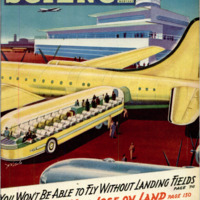 Popular Science Monthly, v. 146. n. 3. 1945
Popular Science Monthly, v. 146. n. 3. 1945
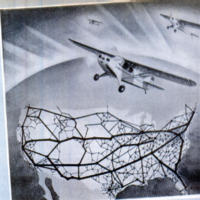 Ekran Resmi 2022-10-07 12.10.14.png
Ekran Resmi 2022-10-07 12.10.14.png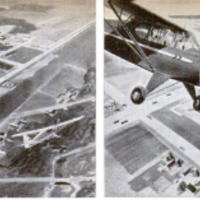 Ekran Resmi 2022-10-07 12.10.22.png
Ekran Resmi 2022-10-07 12.10.22.png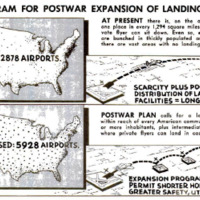 Ekran Resmi 2022-10-07 12.10.29.png
Ekran Resmi 2022-10-07 12.10.29.png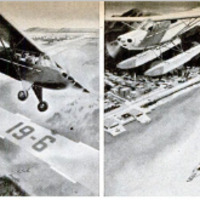 Ekran Resmi 2022-10-07 12.10.35.png
Ekran Resmi 2022-10-07 12.10.35.png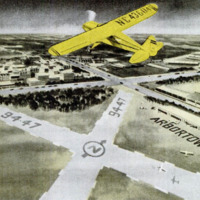 Ekran Resmi 2022-10-07 12.10.42.png
Ekran Resmi 2022-10-07 12.10.42.png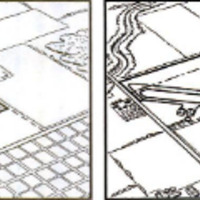 Ekran Resmi 2022-10-07 12.10.50.png
Ekran Resmi 2022-10-07 12.10.50.png Ekran Resmi 2022-10-07 12.10.56.png
Ekran Resmi 2022-10-07 12.10.56.png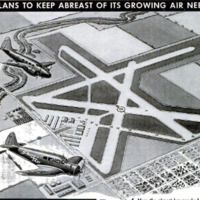 Ekran Resmi 2022-10-07 12.11.03.png
Ekran Resmi 2022-10-07 12.11.03.png Ekran Resmi 2022-10-07 12.11.10.png
Ekran Resmi 2022-10-07 12.11.10.png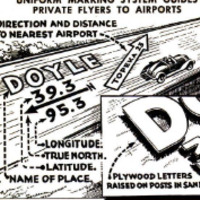 Ekran Resmi 2022-10-07 12.11.15.png
Ekran Resmi 2022-10-07 12.11.15.png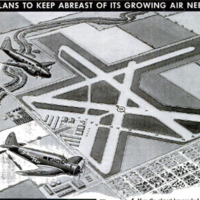 Ekran Resmi 2022-10-07 12.11.03.png
Ekran Resmi 2022-10-07 12.11.03.png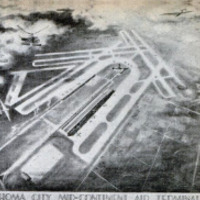 Ekran Resmi 2022-10-07 12.11.29.png
Ekran Resmi 2022-10-07 12.11.29.png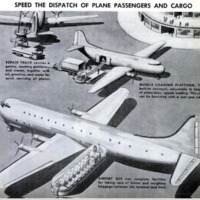 Ekran Resmi 2022-10-07 12.11.36.png
Ekran Resmi 2022-10-07 12.11.36.png












